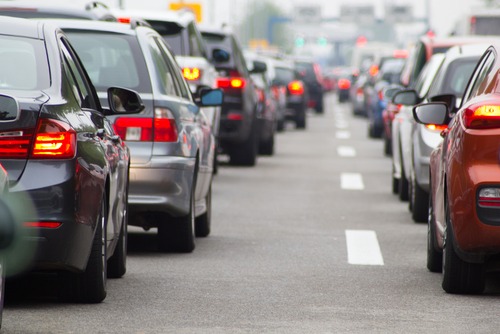
The Metropolitan Transportation Authority (MTA), the New York State Department of Transportation (NYSDOT), and the New York City Department of Transportation (NYCDOT) announced Monday that an Environmental Assessment for the Central Business District Tolling Program can begin.
The assessment kicks off with a public comment period about the project, which had been delayed for 20 months by the previous federal administration. The joint project would be the country’s first central business district tolling program and is hoped to alleviate congestion in the area.
“We are delighted that the environmental review process for CBD tolling has started. Getting congestion pricing in place quickly is essential for the city’s recovery from the pandemic, as it will help get New Yorkers out of their cars and onto sustainable modes like transit and biking, as well as provide essential funding to modernize and expand our rail and bus systems,” New York City Department of Transportation Commissioner Hank Gutman said. “I appreciate the commitment of our state and federal partners to this project and look forward to working with them to further expedite the process.”
Under a plan developed with the U.S. Department of Transportation’s Federal Highway Administration (FHWA), the assessment is scheduled to take 16 months and include more than 20 public meetings, as well as outreach to environmental justice communities across New York, New Jersey and Connecticut.
The project partners will create the assessment document by analyzing the impact of the Central Business District Tolling Program (CBDTP) on traffic congestion, transit, air quality and other environmental indicators in 28 counties across the three states. The study area contains 22 million people, including 12.3 million in environmental justice communities and five tribal nations.
The assessment will look at nearly a dozen different models and data sets to analyze the impact to a regional transportation network that 28.8 million average weekday journeys, 61,000 highway linkage points, 4,600 traffic analysis zones, 44,267 bus or transit stations, 4,170 transit routes and more than a dozen public transportation providers.
“We are operating on an extraordinarily expedited and aggressive environmental review timeframe, yet one that will be painstakingly thorough, and we hope can serve as a model for other U.S. communities considering similar congestion pricing systems,” MTA Acting Chair and CEO Janno Lieber said. “This is a crucial project for the MTA and our riders — both because it will improve air quality and reduce traffic and also because revenue from the CBDTP will be used to support our historic $51.5 billion 2020-24 capital program. Our recent successful projects like the LIRR Main Line Expansion show how the MTA is able to do unprecedented levels of public outreach and also deliver projects on schedule at the same time. We intend to do just that again here.”
The public outreach effort will commence in the coming weeks, the group said, with meetings with federal, state and local agencies from the three states. Those meetings will be followed by 10 virtual public meetings held online starting in late September. In addition to the public meetings, there will be additional briefings for elected officials, community boards, transit and environmental advocates, and other interested parties.
Feedback gathered during the meetings will be included in the Environmental Assessment (EA). Once the EA is published, the agencies will hold follow up meetings for public comment specifically on the document.